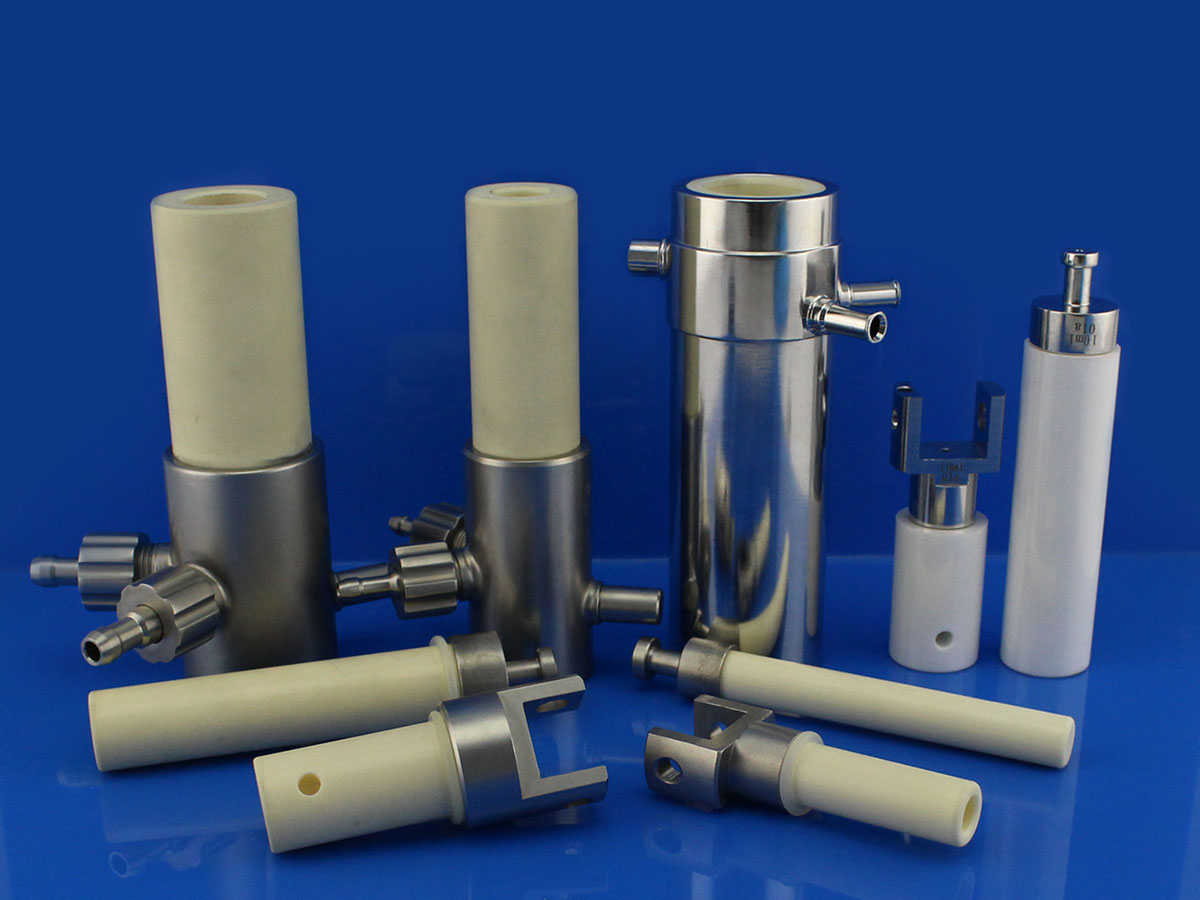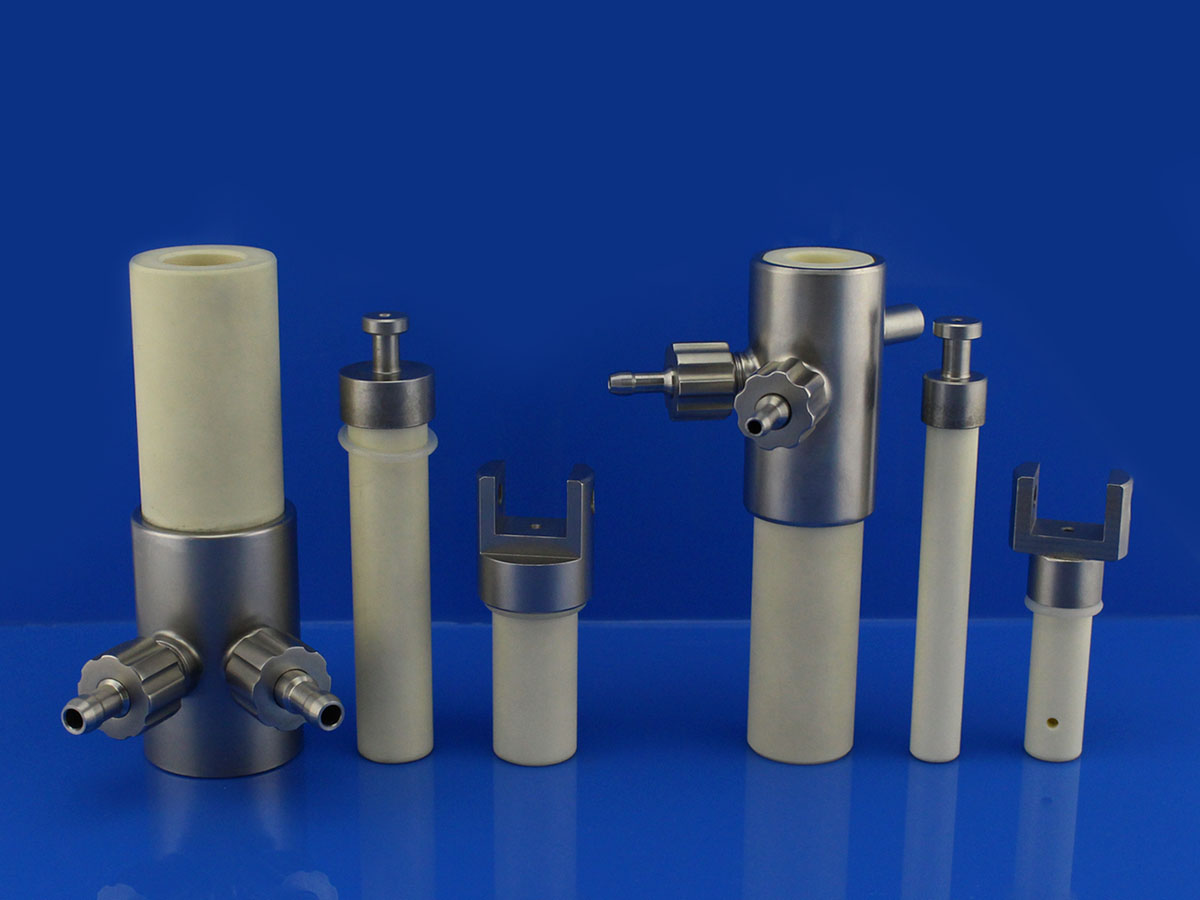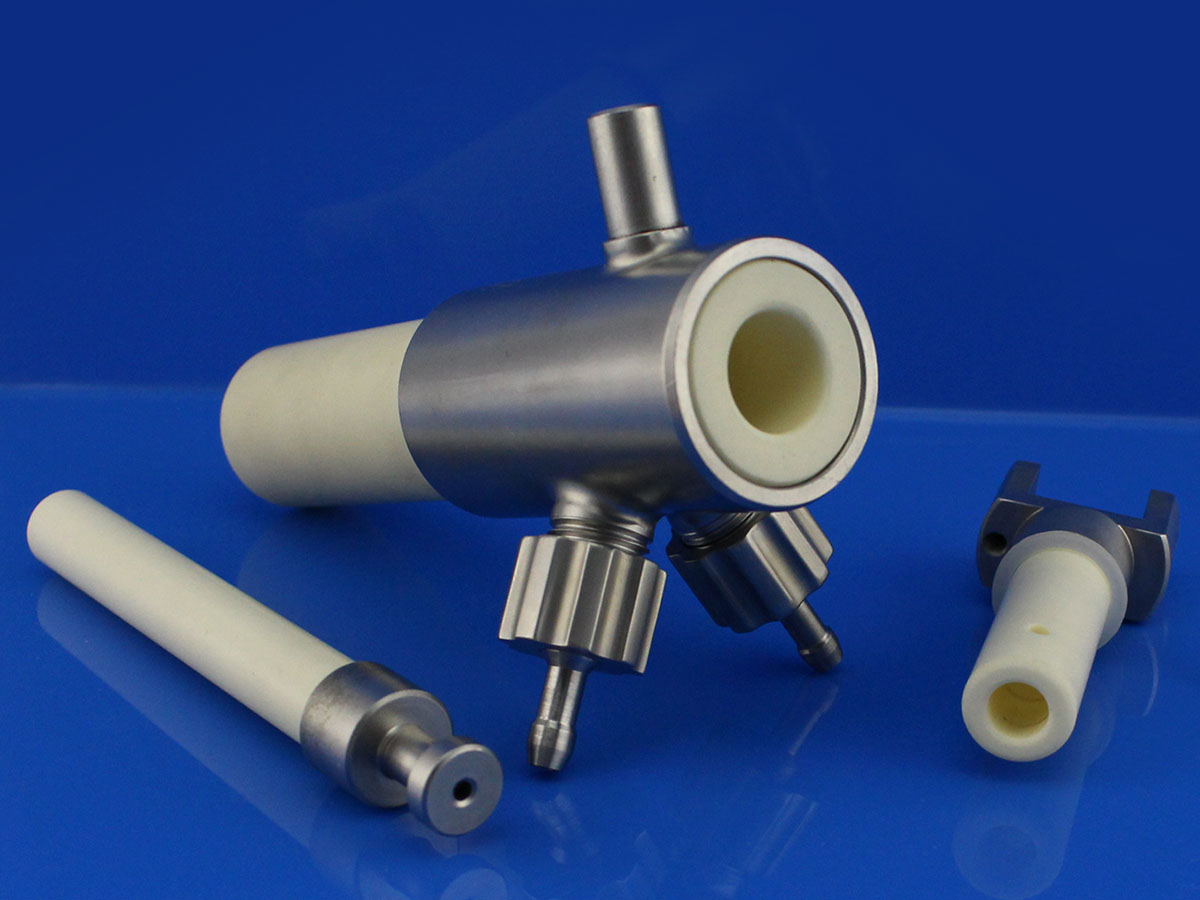The ceramic rotary valve piston is made of high purity alumina (99.7% Al2O3) and SS316L or SS304L.The high purity of this material results in very clean grain boundaries which contribute to its excellent corrosion resistance in the presence of both acid and alkali-based cleaning solutions e.g. NaOH and HCl.
Ceramic rotary valve piston is inert, non-cytotoxic, and does not release particles. It is easy to clean due to the low porosity. It has high wear resistance, a low friction coefficient, and accepts very smooth surface finishes.
1. Application areas:
Widely used in pharmaceutical, chemical, food, scientific research, and other instruments that require precise filling. Minimum filling volume: 0.2ml, maximum filling volume: 50ml, filling accuracy: ≤0.5%, use temperature: 10℃-40℃.
2. Filling range and advantages:
(1). According to different filling ranges, a variety of pump head specifications are available.
(2). Reasonable structure layout, easy to disassemble, easy to clean, more convenient and convenient in maintenance and maintenance;
(3). All the contact materials of this machine are made of SS316L and high-purity ceramics, which have good resistance to acid and alkali corrosion.
4. The use of parameters:
| Model | Small doses ceramic rotary valve piston | ||
| Material | Plunger / Pump Cavity (Alumina 99.7%) + Pump Jacket (SS316L/SS304L) | ||
| Regular type | INS-02 | INS-05 | INS-10 |
| Filling capacity | 0.5-2ml | 1.5-5ml | 3-10ml |
| Filling accuracy | ≥0.25% | ||
| Custom Range | 0-100ml | ||
5. Cleaning and sterilization:
(1). Cleaning procedure:
After cleaning with pure water, rinse with water for injection; For long-term placement and initial use, the pyrogen needs to be removed. Soak in 1~2%NaOH for 30 minutes. Be careful not to use hot alkaline solution (temperature cannot be higher than 40℃). The sealing ring should not be soaked with an alkaline solution for too long, otherwise, the elasticity will change difference.
(2). Sterilization procedure:
Dry heat sterilization or high-pressure humid heat steam can be used for sterilization: However, because the seal ring can only withstand a temperature of 160 ℃, the seal ring should be removed before dry heat, and the seal ring should be sterilized by high-pressure wet heat steam. (It is recommended to use high-pressure humid heat steam for sterilization, sterilization temperature 121℃, pressure 0.1MPa, time 30 minutes).



